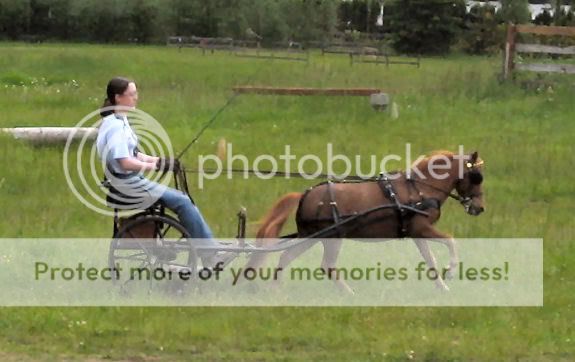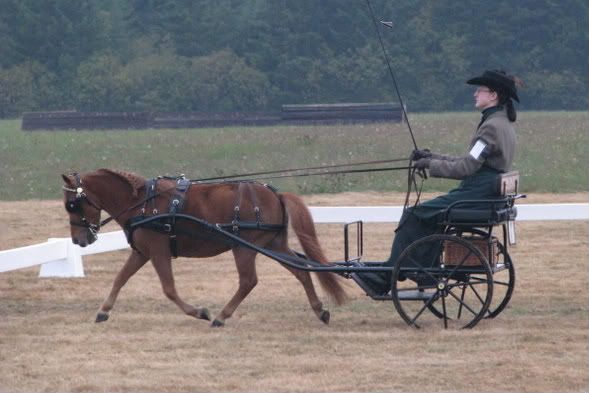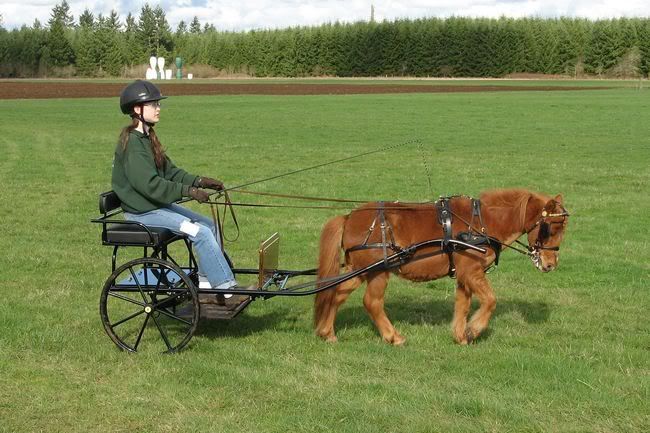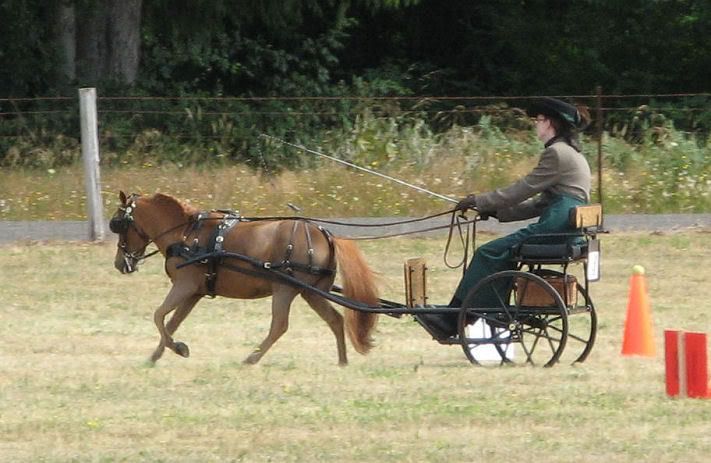Curved shafts are quite normal for full-sized horse vehicles, in fact I think about the only traditional carts that
don't have them are American meadowbrooks, road carts, jog carts and the like. British gig carts always have them! I'm more familiar with harness than carriages so won't pretend to have all the historical details on what specific models and why but I know they are common. At least one purpose I'm familiar with is to allow a taller horse to be hitched to a vehicle without having the seat tipped back at an uncomfortable angle. You can see in the photo below how this vehicle would never fit the horse in question if the shafts were straight!
They are just plain elegant as well.
Looking at that last photo I am reminded that another reason for shafts to tip downwards, and perhaps the original reason, is because straight shafts tend to interfer with neck collars. The tips poke the collar and can sometimes get caught under them causing great discomfort for the horse and perhaps an accident. Turning the shafts down and away from the collar removes that issue completely and would be very necessary for gigs, which I believe where always properly put-to with collars. American road vehicles were usually pulled with breastcollars and so I suspect were usually made with the easier-to-manufacture and presumably cheaper straight shafts.
Also, for neck collars to work properly the traces must be going downhill from the horse's shoulder and bent shafts attached lower on the vehicle so that could be managed. Especially when you combine that with shafts that allowed for a larger (and hence more uphill!) horse, the whole system would have worked together beautifully. See? I knew it would all boil down to harness! LOL
As for getting a rein hooked, in the oldest examples I've seen the shafts were very downturned indeed and ended far behind the shoulder so there was little chance of getting a rein caught unless the horse turned his head completely around. Keep in mind the horses pulling these were also usually checked up so they couldn't get their heads down to hook a rein in the first place! These days a simple neck terret as in the two photos above works beautifully to keep the reins out of harm's way and it sounds to me like whoever told you "the reins get caught all the time" was not properly harnessed for safety with that sort of vehicle.
I have curved shafts on my Bellcrown Minicrown and love them. It's one of the primary reasons I bought the vehicle! Kody was much more comfortable making turns as the shaft tips never poked him in the shoulder, the breeching hung in a nice straight line as the footman's loops were lower on the curve of the shaft and having the shafts attaching lower on the vehicle lowered the center of gravity so it was harder to overturn. I think it made a very pretty picture with my Kody.
Leia









